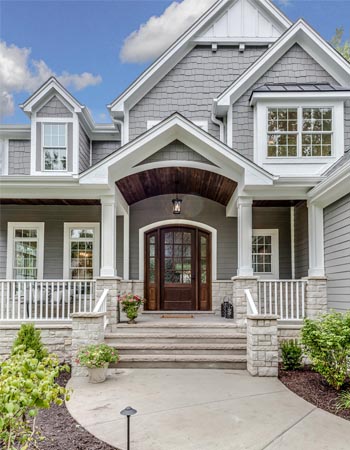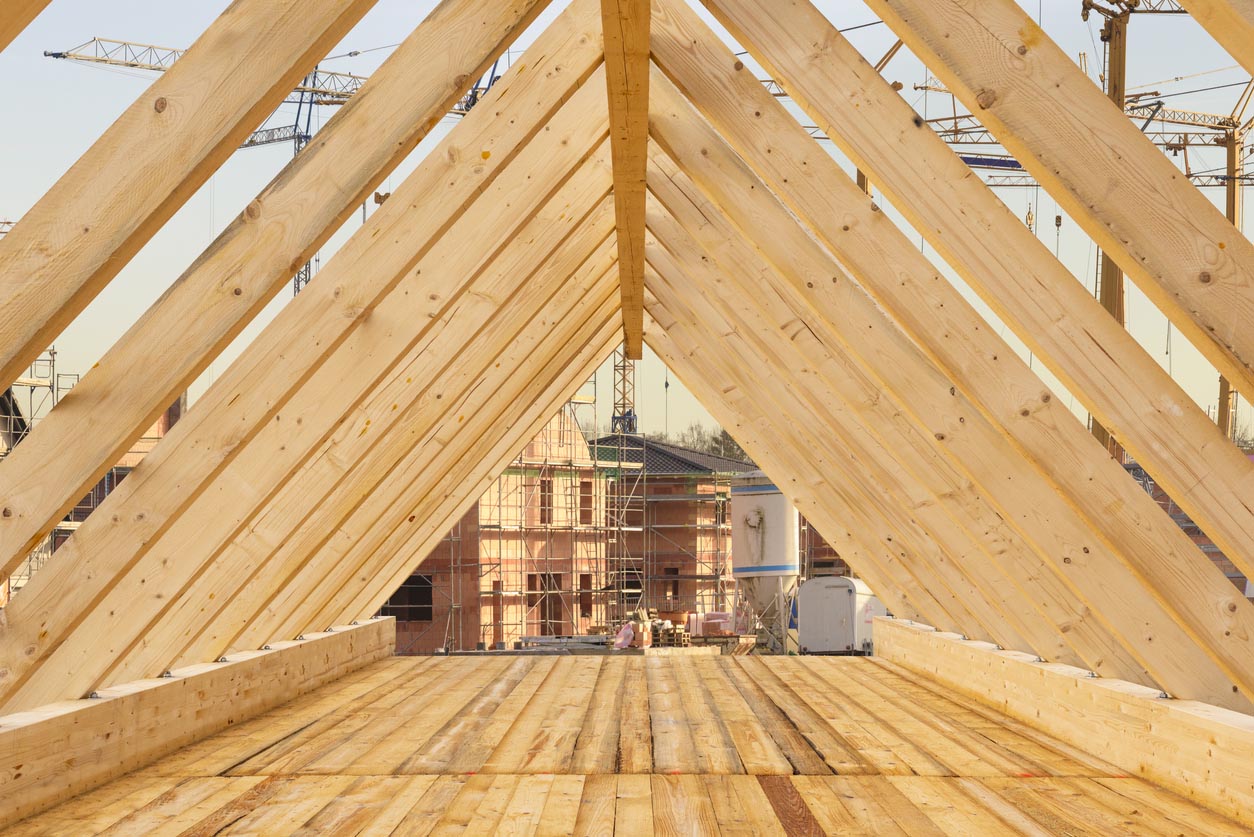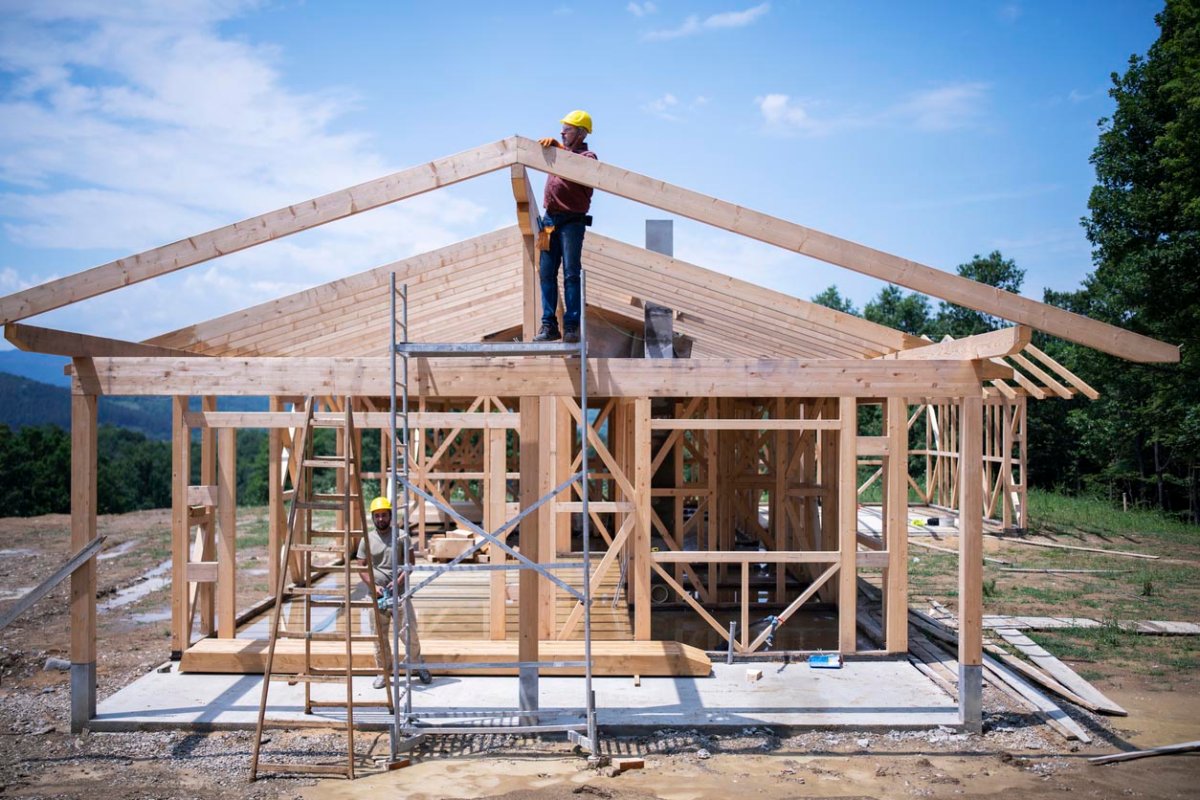We may earn revenue from the products available on this page and participate in affiliate programs. Learn More ›
Q: I am interested in building a home and want to make sure I allow enough time. How long does it take to build a house, and what steps will I need to take?
A: Building a house from the ground up can offer endless possibilities for design and lifestyle fit. While purchasing a house that’s already on the market is often easier and less time-consuming, future and prospective homeowners may be wondering how long does it take to build a house to suit their needs. In addition to considering the cost of building a house, buyers must also go into the process understanding how much time they need to set aside for the project.
Interested in learning how to build your own house? Here’s everything homeowners should know about the process, including how long it will take and which factors can impact the timeline.
On average, it takes seven months to build a house.

The physical building process—from start to finish—takes about seven months. The length of time will depend on the home’s size and whether the home is prefabricated or fully customized. Construction typically begins within one month of obtaining permits, particularly when working with a professional like a contractor.
Note that seven months does not include any of the pre-building steps. Homeowners should also factor in the length of time to assemble a team, find a building site, design the home and floor plan, and obtain permits and loan approval. Some of these steps can be bypassed or shortened—for example, working with a general contractor can speed up the team-assembly process, while having a designated building site can cut down on property-scouting time. All in all, homeowners should be prepared to set aside a full year for the process to allow for these additional factors.
Owner-built homes take closer to 12 months to build.
Handy homeowners may consider taking on some (or all) of the construction process by themselves. However, this is only recommended for those who have the time, experience, and skills to devote to the project. On average, owner-built homes take approximately 12 months to build.
Building a home often takes longer than expected, even for seasoned professionals who can devote their full workday to the job. This effect is amplified when the person who owns the house is building it, as they may not have as much experience, access to resources, or even time during typical working hours. Generally speaking, it is not recommended for homeowners to take the DIY house building route unless they possess the necessary skills and can set aside enough time to do it properly.

Prefab homes take slightly less time to build—about six months.
Prefabricated houses can help homeowners to move into a house quickly while cutting down on construction time. Because their structural pieces are pre-built in sections to be assembly-ready, such as in a modular home, the construction piece of a prefab home can be completed in about six months on average.
Of course, even prefab homes must also undergo the appropriate permit process and steps to select and prepare the land. Therefore, homeowners should allot extra time for this process.
Custom-built houses take the longest to build.
Another factor that impacts how long it takes to build a home is whether the house is built for sale or entirely from scratch. Assuming there are no delays due to weather or other variables, personalized production or built-for-sale homes can typically be completed in three to four months. This is because the designed floor plans have been built many times before, allowing the project to pass approval and parts to be ordered in a timely fashion. While the homeowner may customize specific home components, many of the large-scale decisions will already be built into the plan.
Conversely, houses that are fully custom-built take the longest time to build. The actual construction process can take up to a year or longer, depending on the size and scope of the project. This also does not account for any pre-construction steps, which can tack on additional months or even a whole year to the process. Additionally, when every component is hand-selected by the homeowner, further research, planning, and time will be necessary.

Different phases of construction will take different amounts of time.
While no two jobs are exactly the same, most home building projects will have a similar construction schedule. Each step of the process will take different lengths of time, not including any downtime or periods where work is on hold. This also includes the pre-building stages. Before starting any construction, the surveyor will need a half-day to stake the foundation location. Excavation and any necessary clearing and tree removal take one to two days as well.
Once the land is cleared, exterior work can begin. Footing and foundation require two to three weeks of work, with framing necessitating an additional one to three weeks. Set aside another one to two weeks for roofing and chimney installation. After this, expect another two to four weeks for exterior work like windows and siding, with one to two overlapping weeks for electrical and plumbing.
On the interior, walls and ceilings take approximately two weeks, with interior finish work requiring anywhere between two to eight weeks to complete. After all of this, finishing up the punch list and final inspection will add another week to the process.
Multiple factors can impact a timeline, including weather, the contractor’s skills, how fast decisions are made, and local building department’s schedule.
It’s critical to keep in mind that the above durations are estimated timelines, assuming everything in the process moves smoothly. Several factors can impact the timeline of building a house—only some of which can be controlled.
Weather is one of the most significant determining factors of build time, as extreme temperatures and excess precipitation can delay external construction. Local building department schedules and timelines and the ability to obtain labor and necessary supplies can also impact how quickly a house can be built.
One factor that can be controlled in the timeline for building a house is the planning and decision-making process. Each step of the process builds upon the other, so homeowners must plan out as much as possible ahead of time and minimize last-minute changes. If a change needs to be made, it’s best to address this as early as possible and have contingency plans in place. Without contingencies or backup plans, homeowners will face delays in obtaining new materials and restructuring the building plan.


